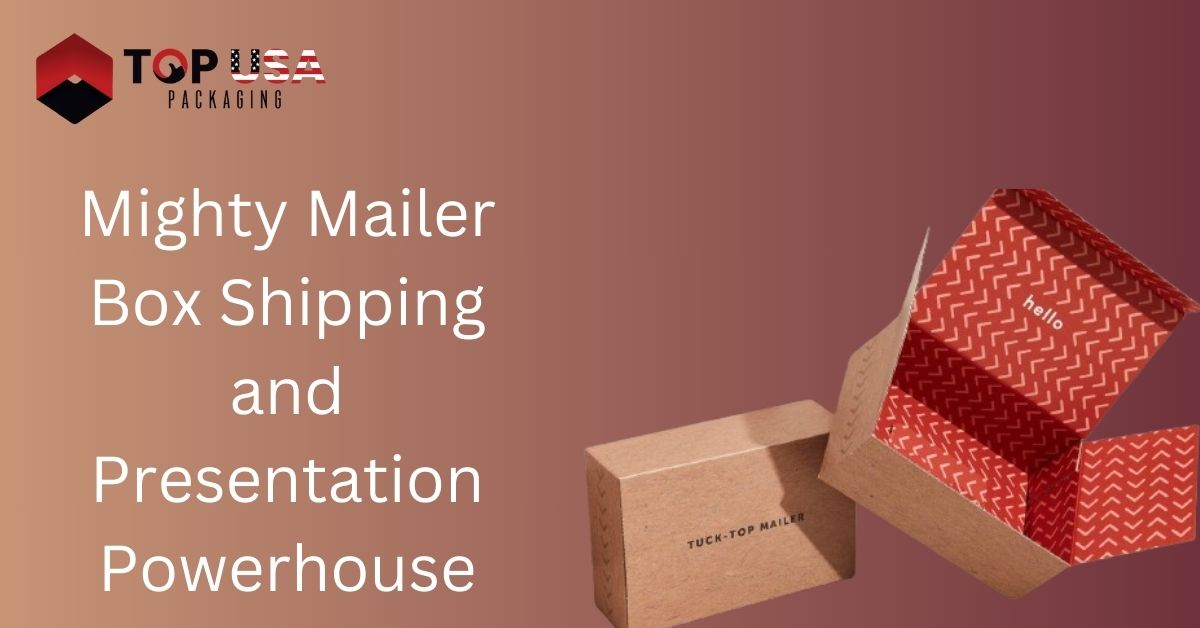Introduction To Mailer Boxes
The unassuming mailer box: a cardboard guardian that shepherds your products from point A to point B. But beneath its humble exterior lies a potential powerhouse for both protection and presentation. In this comprehensive guide, we delve into the world of mailer boxes, exploring their types, functionalities, and strategic uses for businesses of all sizes.
Understanding the Essentials: Types of Mailer Boxes
Mailer boxes come in a delightful variety, each suited to specific needs. Here’s a breakdown of the most common types:
Corrugated Cardboard Boxes: The workhorse of the mailer world, corrugated cardboard offers superior strength and protection. Made from fluted layers of paperboard, these boxes come in various thicknesses (single wall, double wall) to accommodate different weight capacities.
Rigid Mailer Boxes: Often crafted from chipboard or laminated cardboard, rigid mailers provide a premium feel and enhanced protection for delicate items. They’re ideal for showcasing high-end products or those susceptible to bending or crushing.
Poly Mailers: Lightweight and water-resistant, poly mailers are a popular choice for e-commerce businesses. Made from polyethylene plastic, they offer a cost-effective solution for non-fragile items. However, they may not be the most eco-friendly option.
Tubes: Cylindrical tubes are lifesavers for posters, blueprints, or oddly shaped items. They come in various lengths and diameters, ensuring a snug and secure fit.
Gift Boxes: More than just packaging, gift boxes elevate the presentation factor. They come in a spectrum of styles, materials (cardboard, paperboard), and colors, adding a touch of personalization and luxury to your product.
Beyond Protection: The Power of Presentation
Mailer boxes are branding canvases waiting to be unleashed. Here’s how to leverage them for maximum impact:
Customization: Emblazon your logo, brand colors, or messaging directly onto the box. This not only increases brand recognition but also creates a cohesive and professional image.
Sustainable Choices: Opt for recycled cardboard or biodegradable materials. Eco-conscious packaging resonates with environmentally responsible customers and strengthens your brand’s positive image.
Unboxing Experience: Don’t underestimate the power of the first impression. Create a delightful unboxing experience with custom inserts, tissue paper, or even small branded gifts.
Seasonal or Themed Designs: For holidays or special occasions, utilize limited-edition box designs to create excitement and anticipation.
Functionality First: Choosing the Right Mailer Box
When selecting a mailer box, prioritize functionality to ensure your product arrives safely and makes a positive impression. Consider these factors:
Product Weight and Fragility: Heavier or fragile items require sturdier boxes, like double-walled corrugated cardboard.
Dimensions: A snug fit is crucial. Boxes that are too large can damage items during transit due to excessive movement. Conversely, a box that’s too small can cause crushing or bending.
Cost: Mailer box prices vary depending on material, size, and customization options. Balance your budget with the protection and branding needs of your product.
Sustainability: As mentioned earlier, eco-friendly packaging is a growing consumer preference. Consider recycled content or biodegradable materials whenever possible.
Securing Your Package: Closure Options
A secure closure ensures your product stays put during its journey. Here are the most common methods:
Self-Sealing Boxes: Equipped with a pressure-sensitive adhesive strip, these boxes require no tape or additional adhesives, streamlining the packing process.
Tuck Tops: These classic boxes have flaps that fold inward and tuck into themselves, often secured with tape or stickers.
Resealable Boxes: Perfect for subscription boxes or products that may be returned, resealable boxes feature interlocking flaps or a peel-and-seal closure.
The Art of Packing: Optimizing Your Mailer Box
Proper packing ensures your product reaches its destination unharmed. Here are some tips:
Use the Correct Box Size: As mentioned earlier, a snug fit is key.
Add Cushioning Materials: Packing peanuts, bubble wrap, or shredded paper provide additional protection for fragile items.
Consider Void Fill: For boxes with extra space, utilize void fill materials like air pillows or inflatable dunnage to prevent items from shifting during transit.
Secure the Contents: Tape all seams securely to ensure the box doesn’t come undone during shipping.
Conclusion: The Mighty Mailer Box – More Than Just Packaging
Mailer boxes are more than just vessels for shipping. They’re brand ambassadors, silent salespeople, and the first impression your product makes. By understanding the different types, considering functionality and presentation, and employing proper packing techniques.

